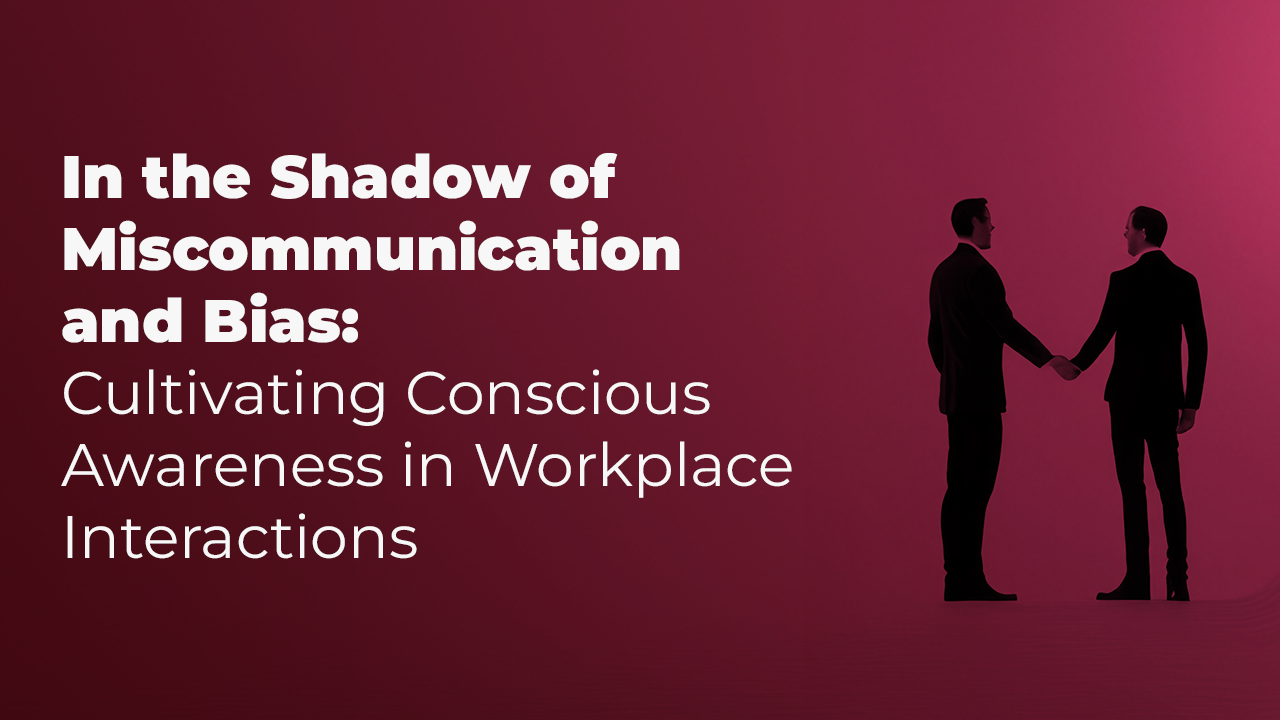
In the Shadow of Miscommunication and Bias: Cultivating Conscious Awareness in Workplace Interactions
Picture this email in a corporate setting:
“Can you clarify this?”
Is it neutral? Possibly.
Passive-aggressive? Maybe.
Just a simple request for more detail? Sometimes, yes.
But if it triggers the question, “Did they think my work wasn’t good enough?” then clearly, more than words are at play—perceptions are speaking just as loudly.
This is the fragile ground on which internal communication in organizations often stands. We may all speak the same language, but we don’t always share the same meaning. That’s because communication is shaped not only by words but by past experiences, personal assumptions, emotional states, and—perhaps most invisibly—biases.
When communication errors merge with unconscious biases, they lead to more than just misunderstandings; they create emotional disconnects. And most of the time, no one says a word. These unseen wounds, when unaddressed, slowly become ingrained in company culture.
Small Moments, Big Disconnects
- A team member who’s repeatedly interrupted in meetings may eventually stop speaking up.
- An employee who misinterprets their manager’s tone as “harsh” might take feedback personally.
- A colleague who constantly dominates conversations may unintentionally reinforce others’ invisibility.
These may seem like isolated incidents, but over time they shape the cultural fabric. When employees start feeling unheard, misunderstood, or undervalued, they don’t just grow quiet—they begin to disengage.
This is why conscious awareness is no longer just an individual skill; it’s a corporate necessity.
Bias: The Silent Shadow Behind Our Decisions
We may not say things like:
- “Gen Z is just too impatient.”
- “That department is always disorganized.”
- “This task suits male employees better.”
But often, these assumptions echo quietly in our minds—and influence our decisions.
Unconscious bias can suppress the potential of a talented employee, dismiss an innovative idea, or lead to unfair task assignments.
Good Intentions Aren’t Always Enough
Organizations often try to explain away communication issues with good intentions:
“I was misunderstood,” or “That’s not what I meant.”
But repeated mistakes—no matter how well-meaning—signal the need for deeper change.
The true solution lies in cultivating empathy-driven awareness practices:
- Was it what I heard that upset me—or what I thought I heard?
- Am I responding to this person—or to my assumption about them?
- Could I have delivered that feedback in a softer, more constructive tone?
Answering these questions has the power to improve not only individual relationships but entire cultural systems.
Where Do We Begin? Small Yet Transformative Steps
- Start team meetings with emotional check-ins to gauge the team’s collective mindset.
- Use softer, more transparent language in written communication. Instead of, “This is wrong,” try, “Could we clarify this part a bit more?”
- Include communication habits in performance reviews—not just task completion.
- Offer training not just to leaders, but to everyone. Because culture change is a team effort.
Biases are frequently subconscious defense mechanisms. But when an organization chooses to acknowledge rather than ignore them, it doesn’t just improve productivity—it strengthens human connection.
In today’s workplace, empathy, clarity, and awareness aren’t just soft skills—they’re strategic ones.